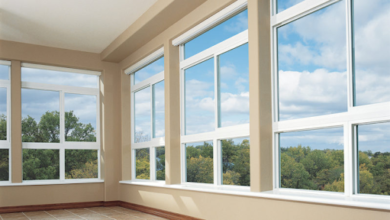How Modern Handgun Design Revolutionizes Everyday Carry

Modern handgun design has significantly evolved over the years, revolutionizing the concept of everyday carry (EDC) for law enforcement, military personnel, and civilian gun owners alike. The advancements in materials, ergonomics, safety features, and technology have not only made handguns more reliable and efficient but also more adaptable to a variety of users and scenarios. Here we delve into the multifaceted nature of modern handgun design and its impact on everyday carry practices.
Evolution of Materials
The materials used in handgun construction have undergone significant changes, moving from the traditional steel and wood to more modern and advanced materials such as polymer and lightweight alloys. These materials have reduced the weight of handguns, making them easier to carry throughout the day without compromising durability or reliability. For example, the widespread adoption of polymer frames, initiated by brands like Glock in the 1980s, has set a new standard in firearm design, combining lightweight properties with high resistance to wear and environmental conditions. This evolution has made handguns more accessible and comfortable for everyday carry, encouraging more people to consider them for personal defense.
Ergonomics and Customization Design
Modern handguns are designed with a strong focus on ergonomics, ensuring that they can be comfortably and effectively used by a wide range of individuals. The adaptability of grip sizes, the angle of the grip, and the placement of controls such as safeties, slide releases, and magazine releases have been critical in this aspect. Many models now offer interchangeable backstraps or grips, allowing users to customize the handgun’s fit to their hand size and preference. This customization not only improves the comfort of carrying the gun but also enhances shooting accuracy and control, critical factors in the effectiveness of a firearm intended for personal defense.
Safety Features
Safety in handgun design has seen remarkable innovations, with manufacturers incorporating features that prevent accidental discharges while maintaining quick readiness for intentional use. These features include firing pin safeties, trigger safeties, and grip safeties, which work together to ensure that the gun can only be fired when deliberately operated by the user. The development of integrated safety systems has made it safer to carry handguns daily, providing peace of mind to the carrier and reducing the risk of accidents.
Technological Advancements
Technological advancements have also played a pivotal role in modernizing handgun design, with features such as optical sights, laser aiming devices, and improved illumination tools becoming more common. Red dot sights, for instance, offer a evlwendz significant advantage in aiming accuracy and speed, making them a popular choice for everyday carry handguns. These technological enhancements have not only improved the performance of handguns in various lighting conditions but also made them more user-friendly for shooters of all skill levels.
Concealability and Accessibility
The revolution in handgun design has also focused on improving concealability and accessibility, essential factors for everyday carry. Slimmer profiles, shorter barrels, and compact designs have made it easier to conceal handguns without sacrificing firepower or accuracy. The development of compact models that still offer a high capacity of ammunition exemplifies the industry’s commitment to combining effectiveness with practicality. For example, the Sig Sauer P365 XL represents a significant leap in this direction, offering a balanced mix of capacity, size, and features that cater to the needs of modern carriers. Furthermore, the design of holsters and carry methods has evolved alongside handguns, offering secure and discreet options that complement modern lifestyles.
The Impact on Everyday Carry
The modernization of handgun design has had a profound impact on everyday carry practices. It has made carrying a firearm a more viable and appealing option for personal defense, due to improvements in safety, comfort, and performance. Law enforcement and military personnel benefit from firearms that are both effective in the line of duty and manageable during long hours of carry. Civilians, too, have access to a range of options that meet their needs for protection, taking into account factors such as size, capacity, and ease of use.
Moreover, the advancements in handgun design reflect a deeper understanding of the diverse needs of gun owners, leading to broader acceptance and integration of firearms into everyday life. As technology and materials continue to evolve, so too will the design of handguns, promising even greater improvements in safety, usability, and performance.
In conclusion, the revolution in modern handgun design has significantly influenced the practices of everyday carry, making firearms more accessible, safer, and more adaptable to a wide range of users. These advancements have not only enhanced the practical aspects of carrying a handgun but have also contributed to a more informed and responsible gun ownership culture. As the landscape of personal defense continues to evolve, the future of handgun design promises to bring further innovations that will continue to shape the world of everyday carry firearms.



